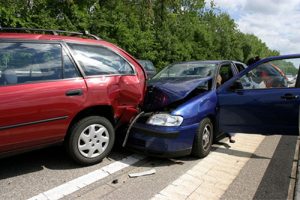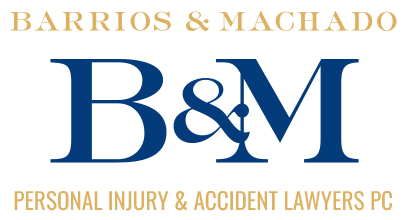
If you or a loved one suffered a serious injury from a collision caused by someone else, you should be compensated for your losses. Talk to our experienced injury lawyers at Barrios & Machado to discuss your best legal options. Call us today at (714) 515-9696.
Southern California: A Hotspot for Car Crashes
Of the 58 counties in California, the six with the highest number of fatal collisions are in Southern California. According to 2018 data from the National Highway Traffic Safety Administration (NHTSA), these six counties are:
- Los Angeles County – 670 crashes
- San Bernardino County – 298 crashes
- Riverside County – 292 crashes
- San Diego County – 255 crashes
- Orange County – 176 crashes
- Kern County – 144 crashes.
This may come as no surprise to us who live in these counties, as we often encounter heavy traffic, hectic rush hours, and terrible drivers. But each of these accidents is an immense tragedy to families who lost their loved ones, and a major burden to individuals who are injured. And in many of these cases, those tragedies could have been avoided.
Common Causes of Car Accidents
How do automobile collisions happen? This is an important question to answer so you and your lawyer can establish fault in your compensation claim. It’s also valuable to know these factors in a car accident to help avoid them in the future.
These are some of the most common car accident causes:
- Distracted driving. The Centers for Disease Control and Prevention (CDC) says that crashes involving distracted drivers kill an average of 9 people and injure more than 1,000 every single day in the US. Common driving distractions include mobile phones (texting and calling), eating at the wheel, and talking to passengers.
- NHTSA data from 2018 shows that on average, speeding killed over 25 people each day. “Speeding” is not just exceeding the posted speed limit but also driving too fast for road conditions.
- Drunk driving/Impaired driving. According to the CDC, an average of 29 people are killed daily in the US in motor vehicle crashes involving a drunk driver. That’s approximately one death every 50 minutes.
- Aggressive driving. Apart from speeding, there are other reckless behaviors that are common on our roads. Examples are changing lanes frequently or unsafely, disregarding traffic signals, tailgating, failing to yield, and showing rude gestures to other motorists.
California Laws on Car Accidents
Fault-based Insurance System
In terms of auto insurance, California is one of the many “fault” states, where you have to prove that someone was at fault in your accident before you can claim compensation. The at-fault party will then be responsible to pay damages.
By contrast, in “no fault” states, it doesn’t matter who caused the crash. Each injured party must claim damages from their own insurer, so drivers in those states are required to carry an insurance coverage called Personal Injury Protection (PIP) on top of their liability coverage.
California does have the optional PIP coverage in the form of Med Pay. While this is not a required coverage, it could prove useful in certain situations – for example, if you were injured by a hit-and-run driver.
Pure Comparative Negligence
“Comparative negligence” is the legal concept of comparing the defendant’s fault against the plaintiff’s (claimant). If you, as the plaintiff, were found to be partly at fault in the auto accident, your compensation could be reduced accordingly. For example, if you were 20 percent at fault, you may only receive 80 percent of your full award.
Some states follow the “modified comparative negligence” rule: if the plaintiff’s share of fault exceeded a threshold (50 percent in some states, 51 percent in others), they would no longer be entitled to compensation.
But here in California, we adhere to the “pure comparative negligence” doctrine. No matter how much your fault was in the crash, you may still receive your appropriate compensation. Even if you were 99 percent at fault, you could still claim the 1 percent award.
What To Expect In A Car Accident Injury Claim
How much is the settlement for car accident injuries?
There is no true average amount in car accident settlements. Case results vary widely, from several thousand dollars to millions depending on the severity of the injuries. Your lawyer should help you examine all the damages you may be entitled to, including economic damages such as medical bills and lost wages, and non-economic damages like pain and suffering.
What is the deadline for filing an injury claim?
The Statute of Limitations is a law that sets a time limit to file a lawsuit. For personal injury cases in California, the statute of limitations is two years from the date of injury. The same applies for wrongful death cases.
There is an exception if you are suing a governmental entity such as a city government or a public works agency. You will have only six months to file a claim against them and then, if denied, up to a few months more to file in court, so it's important to act fast.
Does the statute of limitations apply to insurance claims? No, this rule applies only to judicial proceedings (i.e. lawsuits). The deadlines and time limits for your insurance claim depend on the insurance company. However, even if the insurer gives you ample time to file with them, you should not keep delaying your claim. It’s important to keep the window open for filing a lawsuit in the event that your insurance claim does not give you a fair outcome.
Can I file an insurance claim without a lawyer?
Yes, you may pursue an accident claim by yourself, but this has proven unsuccessful for numerous claimants. Insurance companies are known to employ “delay, deny, and defend” tactics to minimize payouts as much as possible. As a result, many individuals and families have settled for much less than they deserve – or received no settlement at all.
Having an attorney gives you more negotiating power when facing the insurance company, and helps you avoid mistakes that could damage your claim.
When does my car get repaired?
In California, an injury claimant has a duty to mitigate his/her damages. This means that while liability is being determined, a claimant cannot make his damages worse. When it comes to property damage from an accident, a claimant can either go through their own insurer for car repairs/replacement or they can wait for the at-fault party to admit fault and for their insurer to assess and pay out property damages. If the claimant goes through his/her own insurer, they can count on the at-fault's insurer to cover any deductibles, loss-of-use, rental costs and reimburse any insurance payouts through a process called subrogation.
What happens if the at-fault driver has no insurance?
It is illegal to drive a motor vehicle in California without minimum liability coverage. The minimum policy limits in California are $15,000 per person and $30,000 per incident. There are, however, many who drive our roads without even the minimum required insurance. When they cause an accident, you have the right to sue them in court and go after their assets. While most drivers without insurance have few to no assets, drivers can protect their interests by supplementing their own insurance policies with Uninsured or Underinsured Motorist Coverage. This will kick in should the at-fault driver not have adequate insurance.
Free Consultation with Barrios & Machado
We at Barrios & Machado have won favorable car accident settlements for many Southern Californians. Talk to us about your accident injury or your loved one’s wrongful death. Your initial consultation with us is absolutely free and confidential. Call or text us at (714) 515-9696 today.


